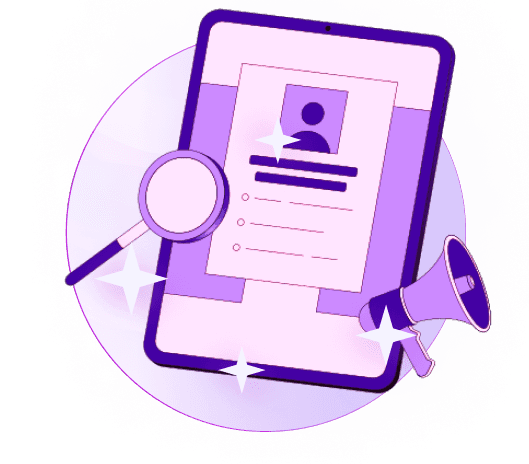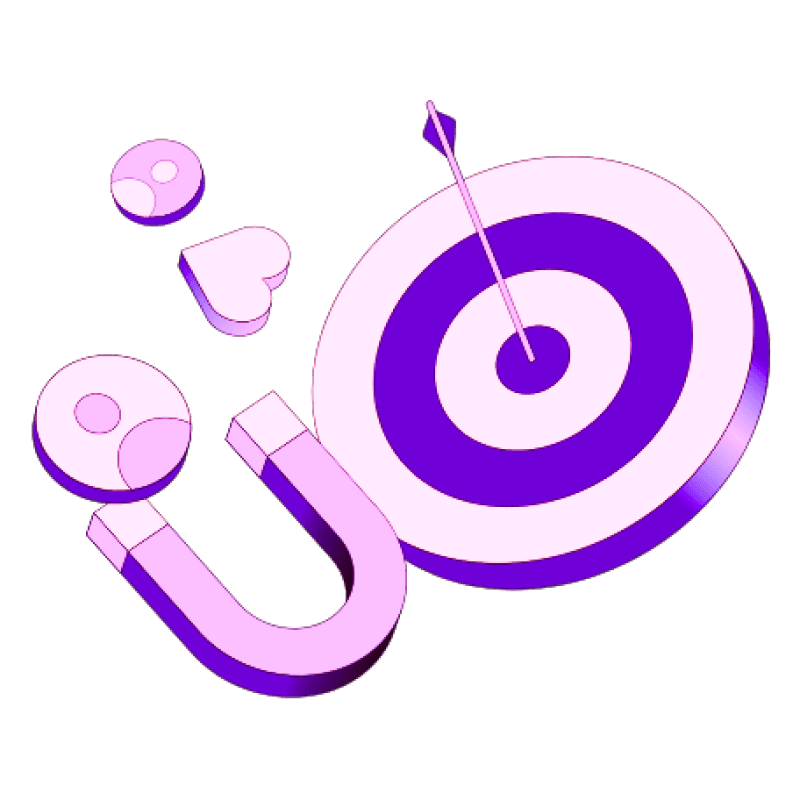Blogs
Articles

What Is a Sales Prospecting Funnel? Definition, Stages & Process
B2B companies that sell through seven or more channels grow their market share 72% of the time. Your sales prospecting funnel works better when you vary your approach.
A sales funnel visually shows how potential customers move through your sales process toward making a purchase. The funnel starts wide at the top with many potential buyers and narrows down to a smaller group of qualified prospects. The sales funnel concept traces back to Chicago meatpackers in the late nineteenth century.
This piece breaks down sales prospecting funnels, their key stages, and shows you how to build one that works for your business. The information here helps both sales newcomers and veterans turn more prospects into loyal customers.
What Is a Sales Prospecting Funnel?
A sales prospecting funnel shows how potential customers move from their first contact with your business to becoming paying customers. This visual framework maps how leads advance through different stages. They become more qualified as they get closer to making a purchase decision.
The prospecting funnel works like a filter. Many potential leads with different levels of interest and qualification sit at the top. These prospects move down through the funnel stages. Their numbers decrease naturally, and only the most promising candidates reach the bottom.
Random outreach efforts don't work well. A well-laid-out sales prospecting funnel lets businesses:
Track conversion rates between stages
Identify bottlenecks in the sales process
Optimize marketing and sales activities at each level
Forecast sales more accurately
Research reveals that 68% of businesses fail to identify and measure their sales funnels correctly. This leads to 79% of leads never becoming sales. These numbers explain why a thoughtful approach to funnel management is significant.
Traditional marketing gave birth to the sales funnel concept. It now lines up perfectly with modern digital strategies. Modern funnels combine smoothly with marketing automation, AI capabilities, and data analytics. This boosts lead nurturing and creates tailored customer experiences throughout the process.
A well-designed prospecting funnel helps your sales team spot where they need to follow up. They can modify their approach when too many leads drop off at specific stages. This clear view of the customer's experience makes communication more effective. It also helps deliver targeted content at each touchpoint.
Companies that manage their funnels effectively can predict their sales better. They do this by watching how leads progress through different stages. To name just one example, if 10% of email subscribers typically become customers, you can forecast future sales based on new subscription rates.
Key Stages of a Sales Prospecting Funnel
Understanding the sales prospecting funnel stages is vital to guide potential customers toward purchase. Let's get into each phase of this trip.
1. Awareness: Reaching new leads
Prospects become aware of your company and its offerings. They identify a problem but might not grasp its full scope. Your brand reaches potential customers through content marketing, social media, advertising, or word-of-mouth. Your goal at this stage is to provide simple information that builds a framework for their thinking without overwhelming them.
2. Interest: Capturing attention
Prospects start seeking more information about products or services that solve their needs once they recognize your brand. They browse your website, read blog posts, and check reviews to understand your offerings better. A mix of increased content marketing, individual-specific email campaigns, and social media participation helps nurture this growing interest.
3. Evaluation: Qualifying prospects
Prospects compare your solution with competitors at this stage. Qualification determines if they need to buy, have the budget, and plan to purchase within a specific timeline. BANT (Budget, Authority, Need, Timeline) and MEDDIC frameworks help qualify prospects systematically. Your sales team can focus on viable opportunities this way.
4. Engagement: Nurturing relationships
Building meaningful relationships becomes essential after qualification. You need to understand client problems and deliver tailored solutions. Regular check-ins and valuable content sharing help build trust and credibility. About 82% of sales professionals believe relationship-building matters most in selling.
5. Action: Closing the deal
The action stage happens when prospects make purchasing decisions. Successful closings address final objections, show how your solution meets specific needs, and provide clear next steps. A simple purchasing process boosts conversion rates. Don't make prospects jump through hoops.
6. Retention: Keeping customers loyal
The retention stage deepens your commitment to paying customers after purchase. Many overlook this phase, yet keeping existing customers costs less than finding new ones. More importantly, customers stay loyal when you solve their problems effectively.
How to Build a Sales Prospecting Funnel?
A step-by-step approach will help you build a sales prospecting funnel that delivers qualified leads consistently. Random tactics won't cut it - you need strategic planning.
Define your ideal customer profile
Your sales funnel's success depends on a clearly defined ideal customer profile (ICP). Research shows companies with well-laid-out ICPs generate 68% more high-quality leads. The best way to start is analyzing your current customer base and identifying what your best clients have in common. Pay attention to:
Demographic and firmographic data (company size, industry, location)
Pain points and challenges they face
Decision-making processes and buying behaviors
Your marketing and sales teams can focus resources on prospects most likely to convert when they understand these elements deeply.
Map the buyer journey
The next step after identifying ideal customers is outlining their path to purchase. Your prospects move through awareness, consideration, and decision stages. Each stage needs documentation of:
What questions prospects are asking
What information they need
Where they look for answers
What might prevent them from moving forward
This roadmap reveals prospect behavior and helps establish criteria for moving leads through each funnel stage based on their actions.
Create targeted content for each stage
Each stage needs its own content approach. Blog posts and social media content work best for introducing your brand at the awareness stage. Case studies and product demonstrations become crucial during the consideration stage. ROI calculators and implementation guides prove most effective at the decision stage.
Use tools for automation and tracking
Technology can scale your prospecting efforts effectively. A reliable CRM system helps manage customer interactions throughout their journey. Marketing automation platforms handle repetitive tasks like email campaigns and lead scoring. LinkedIn Sales Navigator can boost your targeted lead generation capabilities.
Want to take your sales prospecting to new heights? Find out how Persana.ai can help you build and optimize your sales funnel.
Conclusion
A well-laid-out sales prospecting funnel forms the foundation of successful sales operations. This piece shows how proper funnel management reshapes random prospecting into a systematic process that guides potential customers from awareness to loyalty.
Your sales funnel's stage-by-stage understanding provides clear visibility into prospect drop-off points and enables targeted interventions to boost conversion rates. Companies that become skilled at this approach gain a competitive edge without doubt, especially when they use multiple channels. 72% of growing B2B businesses that use seven or more touchpoints prove this point.
Building an effective funnel needs specific steps - defining your ideal customer profile, mapping the buyer's experience, creating stage-specific content, and using automation tools. This approach will give a strong connection with qualified prospects through the right message at the right time.
Your sales funnel adapts constantly. Customer behaviors change, market conditions move, and competitors modify their strategies. Regular analysis and funnel refinement become vital practices to sustain growth.
Sales teams that don't deal very well with inconsistent results should think about how their current prospecting methods line up with the structured funnel model discussed here. You can improve your sales outcomes by doing this and being organized at each funnel stage with tools like Persana that streamline your prospecting process.
FAQ
What is a prospect in the sales funnel?
A prospect represents a qualified lead who has moved beyond basic awareness in a sales prospecting funnel. These prospects differ from general leads because they go through a qualification process to match your ideal customer profile. They show interest in your brand but may not be ready to buy yet.
Different organizations use different qualification criteria. Some companies consider someone a prospect after downloading a report. Other businesses need to see more engagement before qualifying leads.
Prospects typically fall into two distinct categories:
Marketing prospects: Contacts who haven't actively participated yet but show potential. These people might be on email lists and become proper leads after they take specific actions like downloading resources.
Sales prospects: People who have responded to outreach efforts, shown buying intent, and want to talk with sales representatives.
Common examples of prospects include:
Leads who engaged in phone conversations
People who responded to emails
Users who clicked links to visit your channels
Contacts who interacted with your sales team at events
Those who asked about products on social media

Create Your Free Persana Account Today
Join 5000+ GTM leaders who are using Persana for their outbound needs.
How Persana increases your sales results
One of the most effective ways to ensure sales cycle consistency is by using AI-driven automation. A solution like Persana, and its AI SDR - Nia, helps you streamline significant parts of your sales process, including prospecting, outreach personalization, and follow-up.



